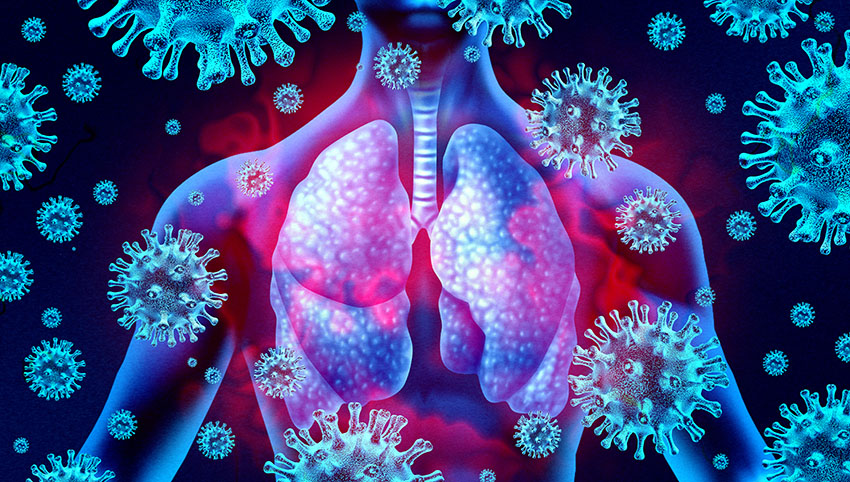In the modern era, we are more connected than ever before—an interconnected world, traveling at unprecedented speeds, exchanging goods, ideas, and, unfortunately, pathogens. Emerging infectious diseases (EIDs) have been a recurring theme in global health for decades, and as we enter 2025, it seems that the battle against them is far from over. In fact, new pathogens continue to evolve, while old ones adapt in ways that outpace our defenses. This article takes a deep dive into the EIDs that are on the radar for 2025, considering their origins, transmission mechanisms, and the measures being taken to mitigate their impact.
The Evolving Threat of Zoonotic Diseases
Zoonotic diseases—those that jump from animals to humans—have caused the most significant health crises in recent decades, from HIV/AIDS to the Ebola outbreak in West Africa and, of course, COVID-19. But the risk of new zoonotic diseases emerging in 2025 remains high. These diseases are often the result of increasing human encroachment into wildlife habitats, intensifying livestock farming, and climate change, which alters the natural habitats of many species.
In 2025, one of the most pressing zoonotic threats to watch is Nipah virus. While Nipah virus outbreaks have occurred sporadically since the 1990s in Southeast Asia, its potential for widespread impact has remained underappreciated. The virus is spread by fruit bats, which are natural hosts of the disease, and it can be transmitted to humans via direct contact with infected animals or humans. The infection causes encephalitis, respiratory issues, and high fatality rates, with up to 75% mortality in some outbreaks.
As globalization accelerates and humans continue to encroach on previously untouched environments, the risk of zoonotic spillover events like Nipah virus becoming a larger-scale epidemic increases. Surveillance efforts and global collaboration are essential to detect and mitigate these threats before they spread globally.
Antimicrobial Resistance: A Silent Pandemic
While not a new disease per se, antimicrobial resistance (AMR) is a growing global health crisis that is expected to intensify by 2025. The World Health Organization (WHO) has warned that AMR could cause 10 million deaths annually by 2050, surpassing cancer as the leading cause of death. This silent pandemic is a direct result of overuse and misuse of antibiotics in both humans and livestock.
The rise of “superbugs”—bacteria that are resistant to multiple antibiotics—poses an enormous challenge. Diseases like tuberculosis, gonorrhea, and even pneumonia are becoming increasingly difficult to treat due to resistance to commonly used antibiotics. In 2025, an outbreak of a multi-drug-resistant strain of Klebsiella pneumoniae or Acinetobacter baumannii could trigger widespread public health concerns, particularly in hospital settings.
What makes AMR particularly alarming is its potential to impact all areas of healthcare. Routine surgeries, cancer treatments, and organ transplants depend on the availability of effective antibiotics. Without them, these procedures could become highly risky, leading to an increase in preventable deaths.
Efforts to address AMR are ongoing, but the threat continues to evolve. A concerted effort to reduce unnecessary antibiotic use, improve infection control practices, and invest in new antimicrobial drugs and vaccines will be crucial in the coming years.
Viral Hemorrhagic Fevers: The Next Wave
Viral hemorrhagic fevers (VHFs), such as Ebola and Marburg, have been a cause for concern in the past, particularly in Africa. However, as of 2025, the risk of these viruses spreading beyond their usual geographic range has become a more pressing issue. These viruses are transmitted through contact with bodily fluids of infected animals or humans, and they often result in high mortality rates, with symptoms ranging from fever and fatigue to severe internal bleeding.
The Ebola virus remains one of the most notorious members of the VHF family, having caused widespread outbreaks across Central and West Africa. While vaccines have been developed to prevent infection, the virus continues to mutate, and new strains are emerging that could challenge our existing immunological defenses. Similarly, the Marburg virus, which is related to Ebola, has shown signs of increased activity in recent years, with the potential for future outbreaks in both endemic and non-endemic regions.
In 2025, the world will need to be particularly vigilant in monitoring for new outbreaks of viral hemorrhagic fevers, particularly in regions where wildlife poaching and illegal animal trafficking are prevalent. Quick detection, containment measures, and effective vaccination campaigns will be critical in preventing these deadly viruses from spreading globally.
Vector-Borne Diseases: The Spread of Tropical Illnesses
With the effects of climate change becoming more pronounced, vector-borne diseases like malaria, dengue, Zika, and chikungunya are expected to expand their reach in 2025. Warmer temperatures, altered precipitation patterns, and changing ecosystems are all contributing to the spread of mosquitoes and ticks, which transmit many of these diseases.
One of the most concerning developments is the expansion of dengue fever into new regions. While dengue has been a persistent problem in tropical regions, its range has steadily expanded as mosquitoes carrying the disease adapt to different climates. The Aedes aegypti mosquito, responsible for spreading dengue, is now found in urban areas across Latin America, Southeast Asia, and parts of Africa, making large-scale outbreaks more likely in 2025.
The emergence of Zika virus in the last decade, with its devastating effects on newborns (microcephaly and other birth defects), has brought attention to the need for robust mosquito control efforts. With climate change continuing to alter the habitats of disease vectors, the need for innovative vector control strategies, such as genetically modified mosquitoes and expanded vaccination programs, will be essential to limit the spread of these diseases.
In addition to the mosquito-borne diseases, tick-borne diseases, including Lyme disease and tick-borne encephalitis, are likely to increase in parts of Europe and North America. As temperatures rise, ticks are migrating to higher altitudes and latitudes, bringing with them the potential for new outbreaks. Lyme disease, caused by the bacterium Borrelia burgdorferi, has already become one of the most common vector-borne diseases in the U.S., and it may continue to spread in the coming years.
Influenza: The Fear of a New Pandemic Strain
Influenza remains a perennial threat to global health, and while we have vaccines and antivirals that help manage seasonal outbreaks, the possibility of a new, more virulent flu strain is always lurking on the horizon. The 1918 Spanish flu pandemic, which killed tens of millions of people worldwide, still serves as a grim reminder of influenza’s potential for devastation.
By 2025, the H5N1 avian flu virus—though not a major concern in recent years—has the potential to mutate into a form that can spread easily between humans. The world has seen sporadic cases of H5N1 transmission between birds and humans, but the virus has not yet developed the ability to spread efficiently among people. However, this could change if the virus evolves and acquires the necessary mutations.
In addition to H5N1, the H7N9 strain and other variants of avian influenza continue to circulate in poultry populations, posing an ongoing risk. The ability of the virus to adapt and evolve makes it a critical area for surveillance. The constant monitoring of animal populations, alongside vaccine development, will be crucial in reducing the risk of a flu pandemic in the coming years.
The Rise of New Viral Infections: The Case of Hantavirus and SARS-CoV-2 Variants
Hantavirus is another emerging threat that is worth watching in 2025. This virus, transmitted through rodent urine, droppings, or saliva, can cause severe respiratory illness in humans. While hantavirus outbreaks have been sporadic in the past, the virus has the potential to spread more widely, particularly as humans continue to encroach upon natural habitats. With the global rise in urbanization and deforestation, the risk of zoonotic diseases like hantavirus could increase.
Another viral threat that continues to loom large is SARS-CoV-2, the virus responsible for the COVID-19 pandemic. While vaccines and treatments have brought the disease under control in many countries, new variants of the virus are likely to emerge, requiring ongoing surveillance and vaccine adaptation. In 2025, the possibility of SARS-CoV-2 variants that are more transmissible or potentially resistant to existing vaccines could pose challenges to global health systems.
The emergence of new viral infections, including those from lesser-known families, could also surprise us in 2025. Advances in genomic sequencing and pathogen surveillance will be key in detecting these unknown threats before they become widespread.
Infectious Disease Preparedness and Global Collaboration
The constant evolution of emerging infectious diseases underscores the need for global collaboration, rapid response systems, and innovative approaches to disease prevention and treatment. The lessons learned from past pandemics—such as the COVID-19 crisis—highlight the importance of transparency, data sharing, and rapid vaccine development.
In 2025, it is essential that global health organizations, governments, researchers, and the public continue to invest in preparedness and resilience. This includes funding for vaccine research, improving surveillance systems,
and fostering international cooperation to address health threats that transcend borders.
Emerging infectious diseases present one of the most pressing challenges of our time, but they also offer an opportunity for global collaboration, innovation, and a renewed focus on public health.






